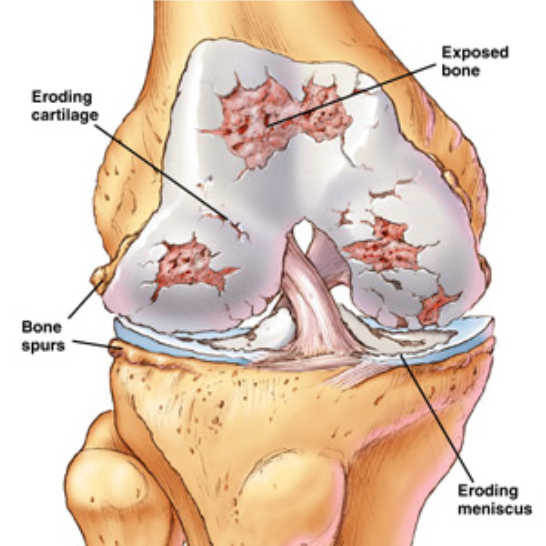Knee, a seemingly simple part of the body, is in reality very complex in nature and serves an extremely vital role in the functioning of the human body.
The muscles and tendons at the knee joint are called into action every time there is a change in posture or movement – be it sitting, standing, running or walking. Therefore, an affliction of the knee is bound to affect the entire rhythm of the body. But what are the major problems that could plague the knee? And how can they be treated?
Causes of Knee Pain
Typical knee complaints are pain, stiffness and instability. But the cause of knee pain is broadly divided into two categories:
- Traumatic: Here, the trauma could be macro-trauma (direct hit, fall etc) or micro-trauma (training error or altered movement pattern due to any mal-alignment of bones of the leg/foot).
- Non-traumatic: Here, the causes are osteoarthritis, rheumatoid arthritis etc.
Osteoarthritis
Osteoarthritis is a degenerative condition with multi-factorial causes but occurs majorly due to ageing or other traumatic/birth related issues. It is further divided into two sub categories:
- Primary Osteoarthritis – Starts around 40-45 years of age. The patient complains of pain and stiffness after prolonged sitting or standing, ascending or descending stairs. It might be associated with some swelling around the knee which is a reaction of the body/joint to the wear and tear happening inside.
- Secondary Osteoarthritis – Can start at an ‘early age’. It develops in response to an underlying disease of joint/deformities by birth / obesity and / altered joint structure due to previous trauma which increases the degenerative process in the joint due to increased wear and tear.
Rheumatoid Arthritis
Rheumatoid Arthritis is an inflammatory condition of the joints with a presentation of morning stiffness with swelling in two or more joints. Usually, small joints of the hand are affected in this with rheumatoid nodules.
In the adolescent age group, there are some specific knees problems reported because of the improper fusion of growth plates, motor coordination not completely developed or bones being porous.
- Osgood Schlatter Disease which involves inflammation of patellar ligament at tibial tuberosity shows signs of pain at the top of the knee bone.
- Sinding Larsen Johansson syndrome demonstrates pain at the inferior edge of the knee cap.
Propioceptive (Joint Position Sense) Deficit
Propioceptive (Joint Position Sense) Deficit leads to instability and lack of balance.
If your joint sense is lost – lack of load bearing at the knee joint – transmission of load is disturbed. Either you are not able to stand without support or you develop pain around the leg or hip musculature as the other muscles of the leg then start to support the leg. And overworking for those muscles leads to developmental of pain, and other complications like:
- Hip pain
- Back pain
- Leg pain
Treatment Options
After determining the cause of the pain, stiffness and instability, the treatment approach is designed by the doctor on the basis of the severity of the condition, symptoms, age and needs of the patient.
Two types of treatment approaches are available
- Operative approach: Operative procedures are performed by orthopaedic surgeon. The physiotherapist helps the patient with pre-operative conditioning and post-operative rehabilitation.
- Non-operative approach: Here, medicines, injection and supplements are advised by orthopaedic surgeon / sports medicine consultants.
